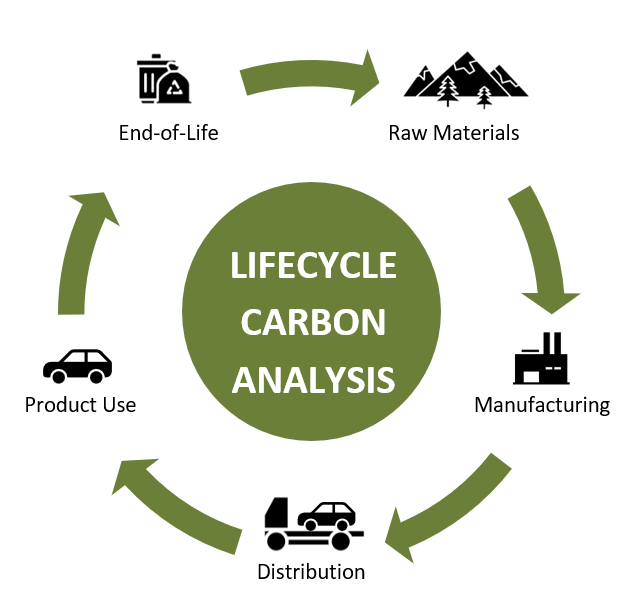Beyond the Tailpipe (Part 1): A Preview
Part 1: The CARBON FOOTPRINT QUESTION
As electric vehicles (EVs) gain traction, promising a cleaner, greener future, questions arise about their actual impact on the environment:
Are electric car batteries bad for the environment?
How are we disposing of these vehicles at their end of life?
Where are manufacturers sourcing the raw materials from?
Is the process of mining raw materials hurting the environment?
These are all important questions as we begin this shift toward zero-emission vehicles. It’s essential to understand the comprehensive, cradle-to-grave, environmental impact of EVs.
As a clean energy consulting company, Optony is determined to provide robust, sustainable solutions, based on actualized data and practical methodologies. We have decided to answer these questions for ourselves, performing an extensive review of scientific studies on lifecycle carbon emissions coupled with an in-depth, in-house lifecycle carbon analysis.
We intend to answer the biggest question of them all:
Are BEVs actually more environmentally friendly than ICEVs?
We have started a journey to uncover the true environmental impact of battery electric vehicles (BEVs) versus internal combustion engine vehicles (ICEVs). Optony’s Lifecycle Carbon Analysis is set to decode the realistic cradle-to-grave carbon footprint of these zero-emission vehicles. From raw material extraction to end-of-life disposal, this analysis navigates the intricate web of direct and indirect carbon emissions, based on a wealth of data from industry-standard studies.
But we won’t stop there. Optony takes it a step further – we looked at an anonymized dataset of fleet vehicles from a sample municipal fleet. Ranging from a small SUV to a robust street sweeper, our analysis went beyond what’s out there as existing literature.
Lifecycle Carbon Analysis – Cradle-to-Grave Methodology: We took a comprehensive approach, observing the Cradle-to-Grave scientific model. The journey spans five basic stages: raw materials, manufacturing, distribution, product use, and end-of-life. Each stage, from material extraction to vehicle disposal, contributes to the overall environmental footprint, with emissions measured in metric tons of carbon dioxide equivalent (MTCO2e).

Let’s do a deep dive into the product use stage – what does this really mean for BEVs and ICEVs?
Both ICEVs and BEVs need to consume fuel in order to operate. ICEVs consume fuel in the form of gasoline, diesel, biodiesel, or renewable diesel, whereas BEVs consume fuel in the form of electricity. Although zero-emission vehicles (including BEVs, plug in hybrid EVs running only on electricity, or hydrogen fuel cell EVs) may produce zero tailpipe emissions when in use, Optony’s analysis emphasizes here that there could still be emissions generated through the process of electricity generation.
Think about it this way: the California electricity grid runs on a combination of natural gas, renewable resources, and imports. When the grid is running entirely or mostly on solar and wind power, it has a lower carbon intensity. But when the grid is relying on natural gas and non-renewable imports, it’s going to have a higher carbon intensity. Many cities, businesses, and homeowners can make a huge impact here by choosing to pay for 100% renewable electricity from their community-choice aggregation or electrical service provider. Sure, driving an EV means you will use less gasoline or diesel and, as a result, your carbon footprint will be lower… but the devil is in the details.
Is the cradle-to-grave carbon footprint of your EV lower than an ICEV?
The short answer is yes. The long answer is coming soon.

 Previous Post
Previous Post Next Post
Next Post